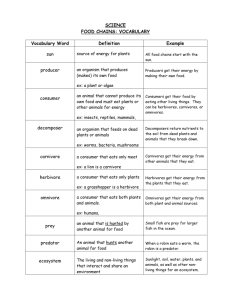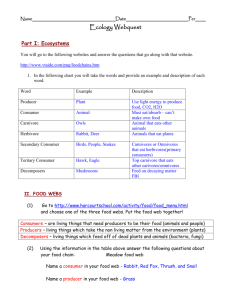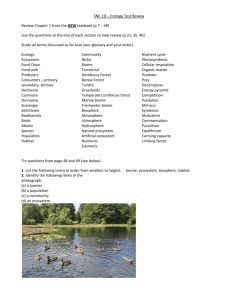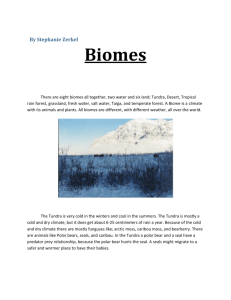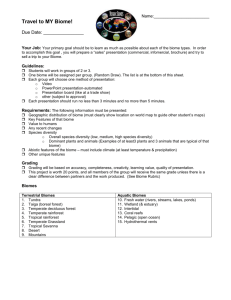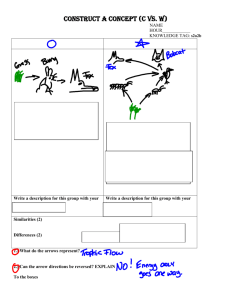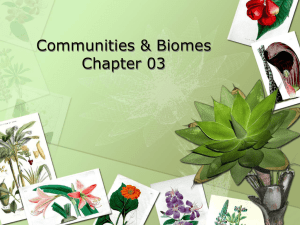Grade 7 Science Revision: Energy, Communities, Biomes
advertisement
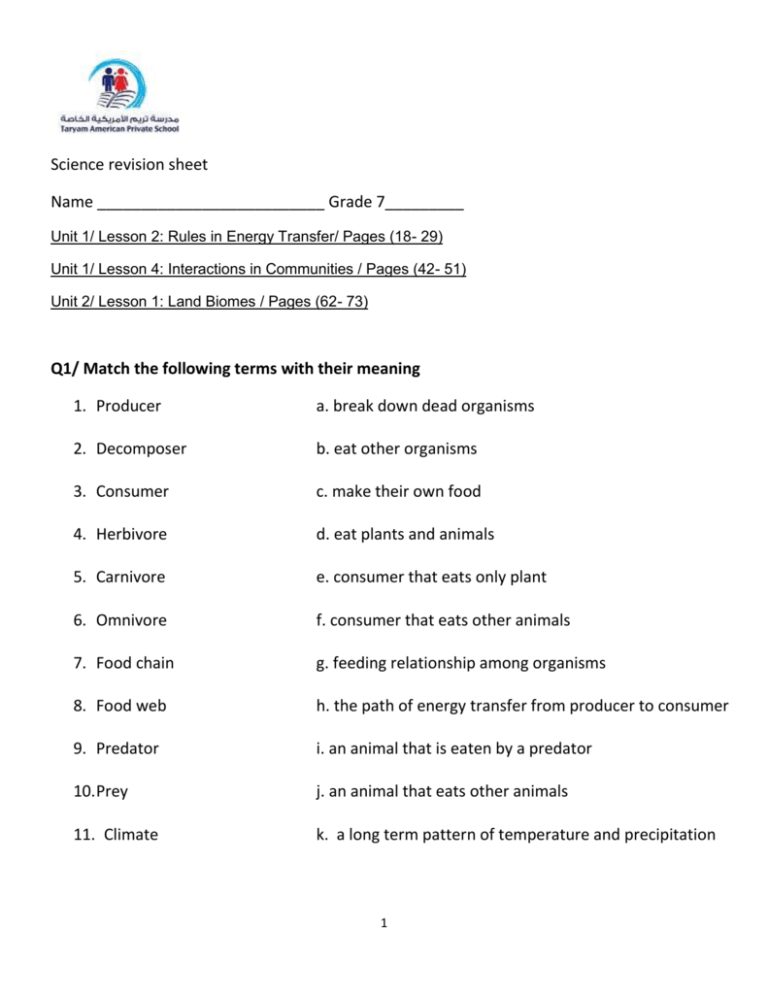
Science revision sheet Name __________________________ Grade 7_________ Unit 1/ Lesson 2: Rules in Energy Transfer/ Pages (18- 29) Unit 1/ Lesson 4: Interactions in Communities / Pages (42- 51) Unit 2/ Lesson 1: Land Biomes / Pages (62- 73) Q1/ Match the following terms with their meaning 1. Producer a. break down dead organisms 2. Decomposer b. eat other organisms 3. Consumer c. make their own food 4. Herbivore d. eat plants and animals 5. Carnivore e. consumer that eats only plant 6. Omnivore f. consumer that eats other animals 7. Food chain g. feeding relationship among organisms 8. Food web h. the path of energy transfer from producer to consumer 9. Predator i. an animal that is eaten by a predator 10. Prey j. an animal that eats other animals 11. Climate k. a long term pattern of temperature and precipitation 1 Q2/ State whether the following sentences are true or false 1. Plants are consumers. _______ 2. Bacteria and fungi are decomposers. ________ 3. The bear that eats plants and animals is a carnivore._________ 4. Lions are herbivore. _________ 5. Producers are also called autotroph. _________ 6. Consumers form the base of the food chain. ________ 7. Food web is made up of many food chains.________ 8. Cat in a cat- mouse relationship is the prey. ________ 9. Plant is a biotic factor. _________ 10. Rainfall is an abiotic factor. _________ 11. Cactus can live in desert because they have needlelike leaves to conserve water. _______ Q3/ What do the arrows on a food chain show? _________________________________________________________________ Q4/ What is meant by top predator? _________________________________________________________________ 2 Q5/ Fill in arrows that trace the transfer of energy from the sun to a top predator, and then answer the question below Identify the following 1. The producer _______________ 2. The primary consumer ___________________ 3. The top predator ____________________ 4. The tertiary consumer ___________________ 5. The secondary consumer ___________________ Q6/ What might happen if the number of leopards increases in an area and the number of the prey decreases in the same area? ________________________________________________________ 3 Q7/ Define Symbiosis. write the three types of symbiosis with their meaning and give an example of each Symbiosis _________________________________________________________ 1. ______________________________________________________________ ______________________________________________________________ Example: 2. ______________________________________________________________ ______________________________________________________________ Example: 3. _____________________________________________________________ ______________________________________________________________ Example: Q8/ Define biome and name the major land biomes ________________________________________________________________ _________________________________________________________________ 1. ____________________ 2. _____________________ 3. __________________ 4. _____________________ 5. ______________________ 6. ___________________ 4 Q9/ Name the land biome or biomes that 1. Contains permafrost _______________ 2. Has more precipitation tundra or taiga _____________ 3. Have coniferous trees ____________ 4. Very dry ___________ 5. Has grasses and few trees ____________ 6. Has deciduous trees _____________ 7. Thick layer of plants that blocks sunlight _______________ 8. Receives more rain than any other biome _______________ Q10/ Describe the soil and determine the location of each biome Land biome Soil Location Tundra Taiga Desert ______________________ Tropical grassland Temperate grassland Temperate deciduous forest Temperate rain forest Tropical rain forest 5

